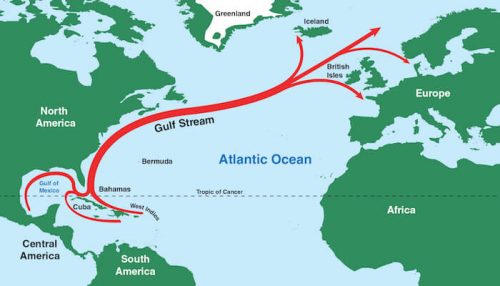Florida’s climate is heavily influenced by climate oscillations, which are the naturally occurring changes and cycles of the atmosphere and ocean.
What’s going on?
The Gulf Stream is an oceanic current responsible for keeping Florida’s coastal waters temperate all year round, meaning the water’s temperature is mostly mild. The Gulf Stream brings up warm water from the Caribbean and Gulf of Mexico into the Atlantic Ocean.
The earth’s climate system is currently in a La Niña phase, a component of El Niño Southern Oscillation (ENSO). La Niña years are historically much cooler than El Niño years, causing unusual cooling of the equatorial pacific.
Despite this, the last few La Niña years, including 2022, have been some of the hottest years on record for Earth. Due to warming temperatures caused by climate change, these millennia-old climate cycles are being disrupted.

Why it matters.
La Niña and El Niño (ENSO) climate cycles affect the Florida Current, which is the beginning of the Gulf Stream. This current is important in predicting weather patterns and sea level rise. The Florida Current is also attributed to the bustling marine life found along Florida’s coasts due to the warm waters it brings.
What you can do.
The ENSO climate cycles are natural and cannot be prevented. But, human-caused climate change is disrupting the cycles, leaving El Niño years to be drier in arid regions and wetter in humid climates. The more we learn about how climate change is affecting climate oscillations, the more we will understand how to predict flooding events, climate, weather and sea level rise.
Information from NOAA and Yale Environment. Gulf Stream diagram courtesy of NOAA.